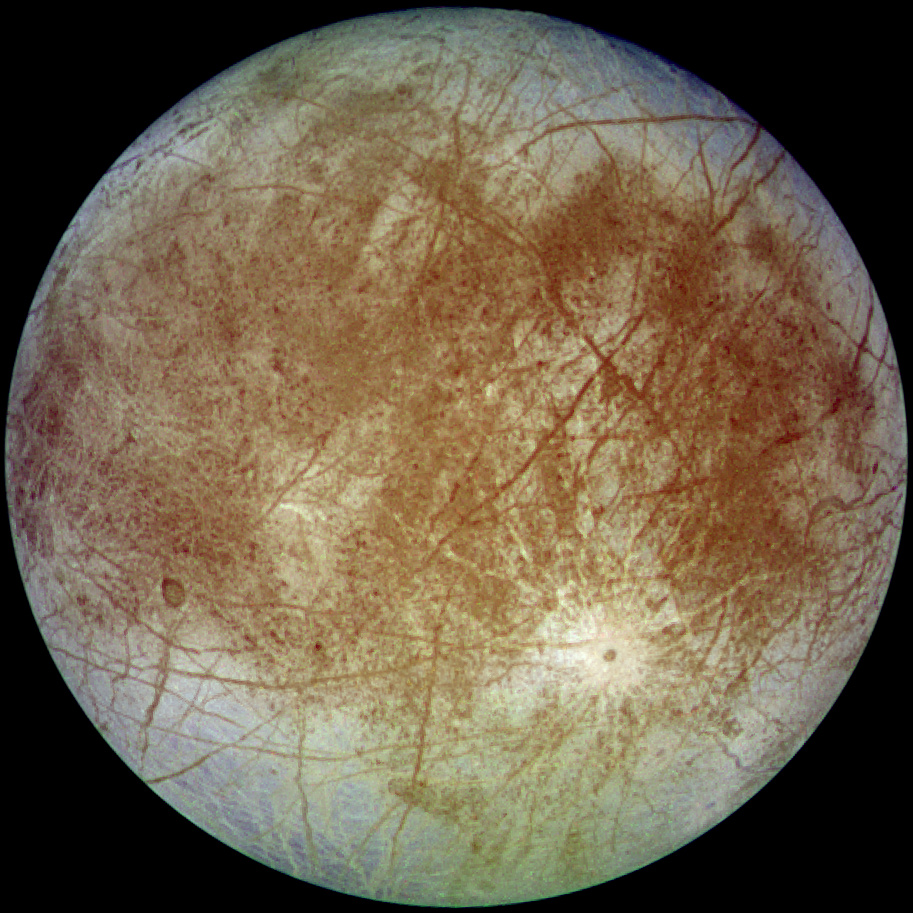Europa: Jupiter’s Mysterious Ocean Moon
Europa, one of Jupiter’s most fascinating moons, is a key focus for astrobiologists and planetary scientists alike. As the fourth largest of Jupiter’s 95 moons, it holds immense potential for harboring life due to its unique characteristics.
Physical Characteristics
With a diameter of roughly 1,900 miles (3,100 kilometers), Europa is slightly smaller than Earth’s moon but larger than Pluto. Its surface is primarily composed of water ice, granting it a high albedo—a measure of reflectivity—making it one of the brightest moons in our solar system. Europa’s icy crust is estimated to be between 10 to 15 miles (15 to 25 kilometers) thick, under which lies a vast ocean of salty water, potentially containing twice as much water as all of Earth’s oceans combined.
Orbital and Rotational Dynamics
Europa orbits Jupiter approximately every 3.5 Earth days and is tidally locked, meaning the same hemisphere always faces the planet. This synchronous rotation leads to interesting tidal flexing effects, contributing to the moon’s geological activity and potentially warming its subsurface ocean.
Exploration and Research
Since its discovery by Galileo Galilei in 1610, Europa has been a target for numerous space missions. The Voyager spacecraft in the late 1970s provided early insights into its surface, revealing a smooth landscape with few craters, suggesting a relatively young surface. The Galileo mission (1995-2003) provided significant data, including evidence of a subsurface ocean, by measuring the moon’s magnetic field disruption.
Future missions, including NASA’s Europa Clipper, set to launch in October 2024, aim to investigate the moon’s ice shell and search for signs of habitability by analyzing its surface and potential plumes of water vapor.
Potential for Life
The conditions on Europa make it one of the most promising places in the solar system to search for extraterrestrial life. The presence of liquid water, essential chemical elements, and energy sources necessary for life forms a compelling case for the moon’s habitability. It’s hypothesized that if life exists, it could resemble microbial organisms similar to those found in Earth’s extreme environments.
Upcoming Research and Discoveries
As scientists continue to analyze data from past missions and prepare for upcoming explorations, the excitement surrounding Europa’s potential for life remains high. The findings from these missions could redefine our understanding of where life might exist beyond our planet.
For more detailed insights into Europa’s exploration, you can read about NASA’s Europa Clipper mission.


Parašykite komentarą